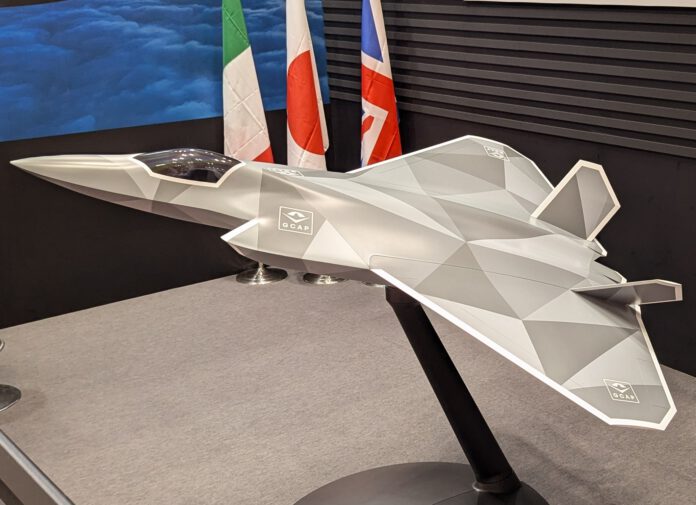
In recent years, Japan has intensified its defense cooperation with European countries, notably through the joint development of a sixth-generation fighter jet with the United Kingdom and Italy. The UK proposed the concept of a co-developed maiden flight of Tempest in 2018, with Italy and Japan later joining the initiative. In December 2022, the governments of Japan, the UK, and Italy officially launched the Global Combat Air Programme (GCAP) to develop the next-generation fighter aircraft. By March 2023, the defense ministers of the three nations convened in Japan to discuss the project, and by December 2023, they signed an agreement, officially kicking off the program.
The Japanese government made a significant move in March 2024, lifting the ban on joint R&D with the UK and Italy and allowing the export of new fighter jets to third countries. On the same day, Japan’s national security conference amended its Three Principles on Transfer of Defense Equipment and Technology to include specific guidelines for fighter jet exports. In May, Japan’s House of Representatives approved a bill to create a coordination body for the joint development and production of new fighter jets. The Japanese Senate passed a proposal in June to establish the GCAP International Government Organisation (GIGO), tasked with overseeing the collaboration.
GIGO will manage R&D efforts and be supported by a manufacturing consortium, which includes Mitsubishi Heavy Industries (Japan), BAE Systems (UK), and Leonardo (Italy), with an Italian representative at the helm. In October 2024, the defense ministers agreed to accelerate the development of the next-generation fighter aircraft. GIGO will be formally established in the UK, with Japan appointing Masami Oka, a former defense official, as the first chief administrative officer. GIGO will coordinate operations through an executive body and an operating committee composed of representatives from each country, overseeing military industry contracts and export management.
The joint R&D of defense equipment is becoming a global trend, with the GCAP addressing the needs of Japan, the UK, and Italy to upgrade their air forces. The rising sophistication of military technology has significantly increased the costs of developing and procuring advanced weaponry. Joint R&D provides a means to mitigate these challenges, allowing the countries to share technology and financial burdens. The close timing of the three nations’ fighter jet development initiatives provides a rare opportunity for collaboration.
Just after the UK launched the maiden flight of the Tempest project in 2018, Japan introduced its F-X project for the next-generation fighter in 2019. Beyond their similar timelines, Japan, the UK, and Italy share compatible technical needs, as their current fleets—based on different versions of the F-35—no longer meet operational requirements. The GCAP is designed to combine the strengths of the three nations, developing a new fighter featuring advanced sensors, cutting-edge weapons, and next-generation information networks.
A conceptual model of the next-generation fighter was revealed at the 2024 Farnborough International Airshow. According to the R&D timeline, GIGO and the consortium plan to sign their first contract in 2025, marking the beginning of full-scale development. The new fighter will complete its design by 2027, undergo ground and flight tests by 2029, and be ready for service by 2035. Japan aims to deploy 100 sixth-generation fighters by 2035, replacing its aging fleet of 91 F-2 multi-role fighters.
For Japan, this collaboration is the first major defense partnership outside the United States since World War II. The shift in Japan’s defense policy and its growing security ties with Europe will have a significant impact. The initiative fosters deeper bilateral and multilateral security cooperation between Japan and European nations, bringing European attention to the Asia-Pacific security landscape. Additionally, the partnership expands Japan’s military-industrial links to Europe and NATO, improving interoperability between the Japan Air Self-Defense Force and NATO air forces. Through this joint R&D program, Japan also seeks to achieve breakthroughs in defense exports and collective self-defense.
Despite its potential, the GCAP faces several challenges. The three countries have limited experience in large-scale defense R&D cooperation, and Japan, the UK, and Italy lack access to the core technologies of the U.S. F-35 program, in which they are all involved. While they possess assembly and production experience, the technological gap is a significant obstacle to developing a sixth-generation fighter. Furthermore, Japan, the UK, and Italy have limited prior experience in joint large-scale military projects, which could result in operational challenges.
The high costs of the project add another layer of complexity, particularly given Japan’s aging population, shrinking workforce, and significant government debt, which constrain its ability to increase defense spending. Similarly, the UK is grappling with financial challenges. Japan’s defense policy, historically influenced by the U.S., introduces additional uncertainties into the collaboration. Therefore, while the GCAP holds promise, it faces numerous hurdles and an uncertain future.
Source: MBDA, JANES, Defense Blog



